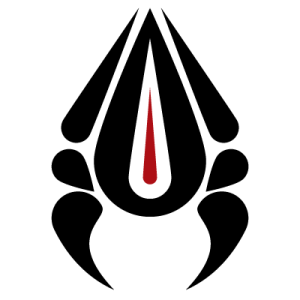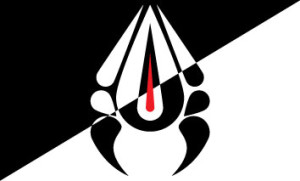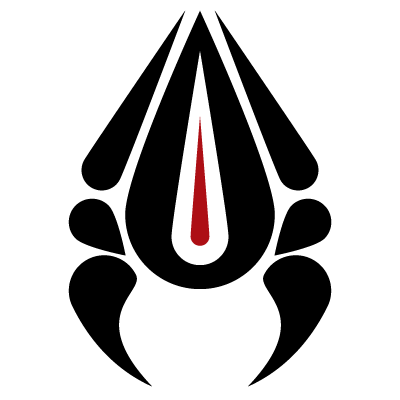
Species name: Vreka (AKA Vrekans, Vakans, Vrekavok)
Full name: (Nitropneic) Panvrekavok Vrekavok Vreka
Average dimensions:
Average Height: 2.8m
Weight: 200kg
Description: Vreka are huge, bulky, armoured bird-like beings. Their arms and legs are thick and muscular, designed to hold their heavy bodies upright. Their armour, unlike other races, is bony rather than plastic-y, made out of a mixture of bone and keratin, and constantly needs trimming. They have a large, long spike that protrudes from their heads, and pincers around their beak-like jaws. They have three claws and a thumb on both their hands and feet, but one of their feet claws is extended into a velociraptor-like scythe and their middle claw is extremely long but retractable – it can extend out to a maximum of 75cm but can be pulled in to match the same length as their other claws, at about 10cm. Vreka have small, stubby tails, which probably used to have feathers on them.
Colouration: Vreka are very brightly coloured. Their external armour, claws and beak are all the same colour and this colouration leaks into their bones – Vrekan skeletons have been unearthed and are just as brightly coloured as the rest of a Vrekan.
Abilities: Vreka are incredibly durable, capable of withstanding a huge amount of damage before falling. They are capable of running at somewhat low speeds – up to 20km/h, but their momentum makes them incredibly hard to stop. Their pincers are strong enough to cut through bone and plasti-organic armour with ease.
Temperament: While individuals can slowly warm up to others, the Vreka as a whole are distrustful and quick to jump to conclusions. They can often be described as selfish and are known to bicker, not really caring about other races but this can sometimes be a cover of their true intentions. They are not as smart as the other two more civilised races (the Cassids and the Retha) and rely on their sheer strength to pull them through tough times. Over the last few centuries, they have slowly began to open up, and it’s clear that they can care and understand, they just do so differently.
Diet: Vrekans enjoy eating flesh and root vegetables, heavily seasoned in spices. They herd and breed large, cattle-like creatures and farm a variety of vegetables, although few of them are leafy.
Life Cycle: Children are born as live young, looked after by the mother only, until they are 10 years old and are taken away by their fathers to be taught basic education until the age of 15. They then spend 7 years training as soldiers until they are sent out to fend for themselves. Female Vreka are expected to get married and start having children quickly, while males are expected to serve in the Vrekan Army for as long as possible. Vreka can live for up to 200 years, assuming they are not killed in wars. They never stop growing, but by the time they reach 75, their growth slows down to millimetres per year.
Culture: Vrekan culture is both male- and war-dominated. All Vreka are expert fighters and incredibly durable. Much of their free time is spent sparring or practising with weapons. Females are considered weak, despite being mentally stronger, and are often seen as a lower caste.

Government: The Vreka Army is almost worshipped, due to the power it has over everyone. It came into power in 1001 PDW, after a coup that killed the two warring royal families that ruled before them. At the top of the chain are the 10 Vrekan Princes, each of whom is assisted by 10 Barons. Each Baron has their own legion of 10,000 Vrekans. Those in power can only be male, females are not allowed to rule.
Technology:Vrekan technology is somewhat crude, cobbled together out of whatever they can find, although it used to be vastly more advanced before the Deitic War. It appears that the Deitics purposefully destroyed much of the Vrekan infrastructure out of spite.
Economy: Much like their technology, Vrekan economy has seen far better times, but is slowly improving as of the last 40 years. Unemployment levels are at their lowest for the last century and the discovery of useful metals and ores on many Vrekan territories has allowed them to claw their way back into sustainability.
